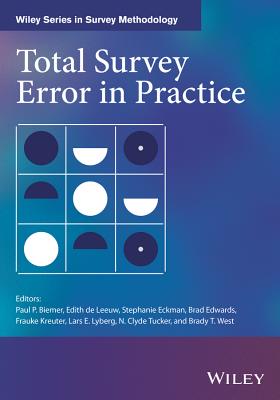An edited volume for an upcoming conference on Total Survey Error (TSE), this book provides an overview of the TSE framework and current TSE research as related to survey design, data collection, estimation and analysis. The book recognizes that survey data affects many public policy and business decisions, and thus focuses on the framework for understanding and improving survey data quality. The book also addresses issues with data quality in official statistics and in survey, opinion, and market research as the field of statistics has changed, leading to larger and messier data sets. This challenges survey organizations to find ways to collect data more efficiently without sacrificing quality. This volume consists of the most up-to-date research and reporting from over 70 contributors representing the best academics and researchers from a range of fields. The chapters are broken out into five main sections: The TSE Framework; Implications for Survey Design; Data Collection and Data Processing Applications; Evaluation and Improvement; Estimation and Analysis. Each chapter introduces and examines at least one error source, such as sampling error, measurement error, and nonresponse error, which are the most recognized. The TSE framework presented also encourages readers not to lose sight of the less-commonly studied error sources, such as coverage error, processing error, and specification error. The book also notes the relationships between errors and the ways in which efforts to reduce one type can increase another, resulting in an estimate with more total bias. Examples are provided of recent scandals involving incorrect or misleading official statistics and survey estimates, such as the ongoing controversy over the number of civilians killed in the Iraq war, and how many reputable polling firms made incorrect predictions about the outcome of the 2012 US election. In Sweden, a faulty calculation of the Consumer Price Index led to overpayments of social security benefits and some organizations collecting data in international surveys have been accused of fabricating portions of their data sets. This practical insight on survey data quality presents concerns about the data errors and the methods and approaches necessary to prevent or remove them.





![塔木德:猶太人的致富聖經[修訂版]:1000多年來帶領猶太人快速累積財富的神祕經典 塔木德:猶太人的致富聖經[修訂版]:1000多年來帶領猶太人快速累積財富的神祕經典](https://media.taaze.tw/showLargeImage.html?sc=11100697818)






